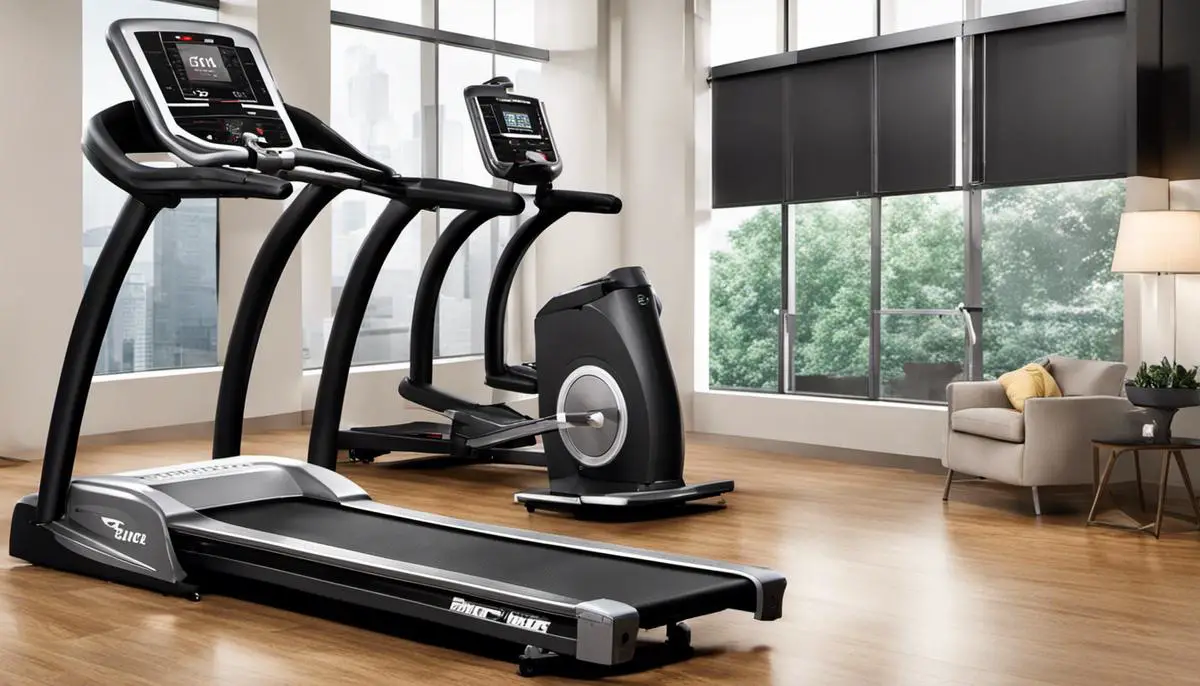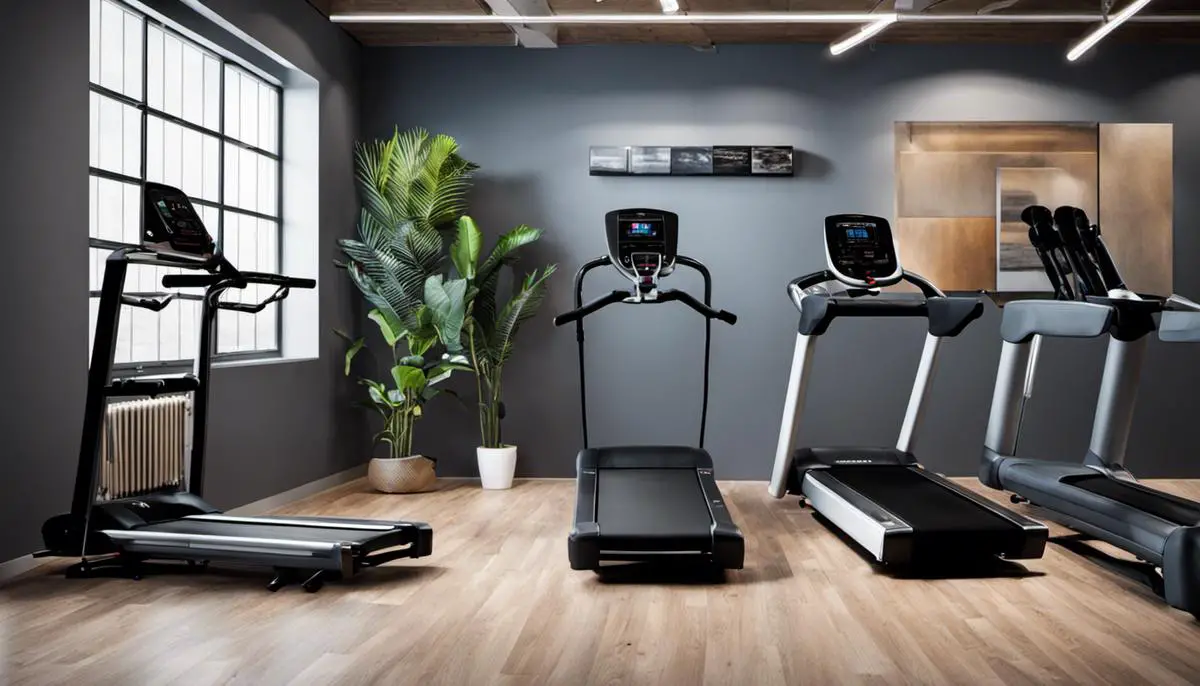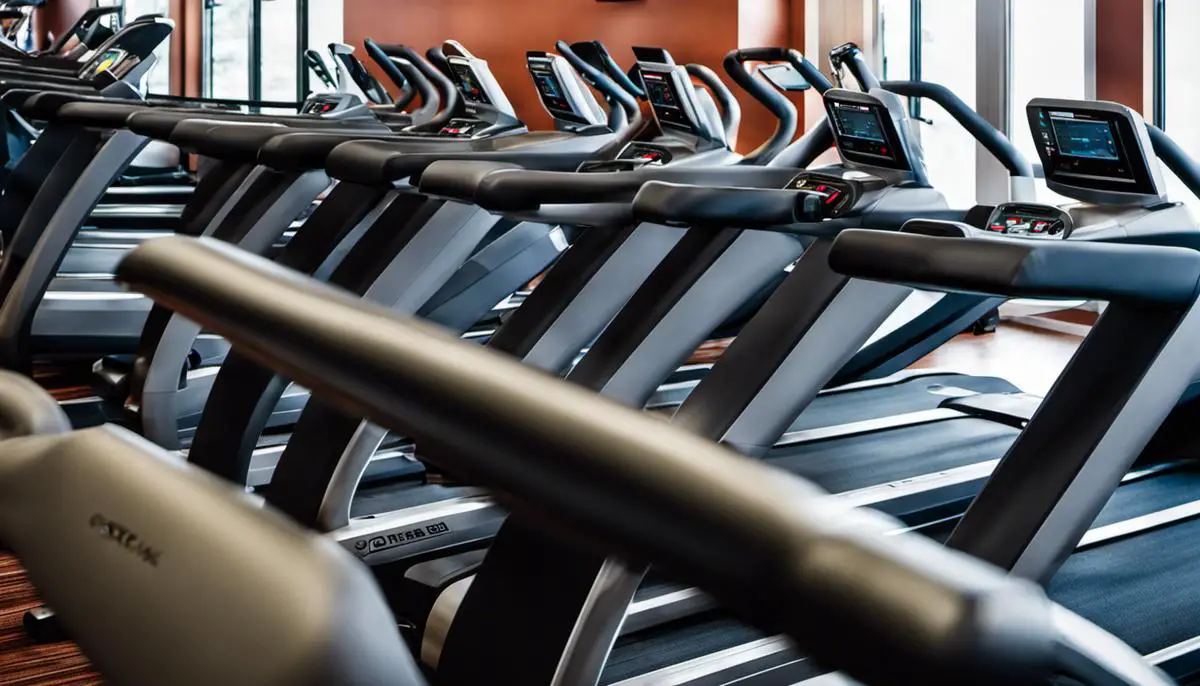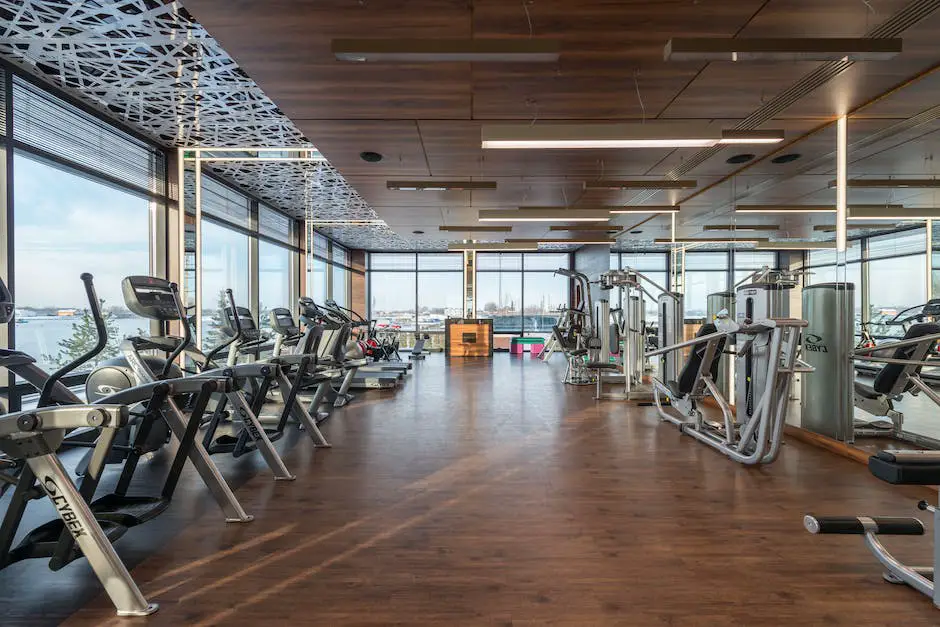Engaging in regular cardiovascular exercises greatly contributes towards a healthier lifestyle, and utilizing the right in-home cardio exercise equipment makes it even more convenient. It is important, however, to be accurately informed on the types, functionality, and benefits of these tools to optimize the effectiveness of our routines while ensuring safety.
This article navigates through the basics of cardiovascular exercises, overviews of in-home cardio equipment, comparative analysis, top-notch brands in the fitness industry, as well as fortifying tips on equipment maintenance and safety precautions. A well-informed approach to fitness will enhance the quality of your workouts and ultimately, your overall well-being.
Table of Contents
Understanding Cardio Workout
Understanding Cardio Workout and its Importance
Cardiovascular exercises, often simply referred to as cardio workouts, are activities that get your heart rate up to build up your breathing rate. They are designed to increase the heart’s ability to deliver oxygen and energy to the working muscles. Examples of such exercises include running, cycling, swimming, or brisk walking.
The benefits of cardio exercises are immense. They boost the heart health, help control blood sugar, lower bad cholesterol, reduce stress, help in weight management, and even improve sleep. According to the American Heart Association, adults should aim for at least 150 minutes of moderate-intensity or 75 minutes of vigorous-intensity aerobic activity per week.
Cardio workouts create a demand for extra oxygen in the muscles, which results in a greater requirement for blood from the heart. This prompts the heart to beat faster, thus increasing the heart rate. As the body adapts to regular cardio workouts with proper progression and recovery, your heart gets stronger and can pump more blood with every beat. This enhances the overall cardiovascular fitness.
Top Choices for At-Home Cardio Exercise Equipment
- Treadmill: As a reliable and versatile option, treadmills are favored in home gym setups. Suitable for walking, jogging, or intense sprinting, these machines cater to various fitness objectives. Most modern models are equipped with pre-set workout schemes, personalized routines, heart rate monitoring, and options for incline modifications to mimic outdoor running conditions.
- Stationary Bike: Known for being gentle on the knees and joints, stationary bikes offer a comfortable and effective cardiovascular workout. Choose from traditional upright bikes or go for recumbent models for a more laid-back cycling experience. Many of the latest designs feature interactive display screens to simulate real-life path cycling.
- Rowing Machine: Promoting a holistic workout, rowing machines engage all major muscle groups. The motion required on a rowing machine replicates the physical demands of boat rowing while offering a balanced mix of strength and cardio training.
- Elliptical Machine: If you’re seeking another low-impact alternative, elliptical machines are worth considering. They mimic the natural gait of running without causing undue stress on your joints. By adjusting the machine’s resistance or incline, users can modify the workout’s rigor as desired.
- Jump Rope: Despite its simplicity, a jump rope can deliver a comprehensive full-body workout, capable of burning significant calories in minimal time.
Choosing the right cardio equipment involves reviewing your fitness goals, current fitness level, available room, and budget. Remember, owning top-of-the-line workout equipment is only a fraction of the fitness journey. The key to achieving and maintaining a healthy lifestyle lies in executing your cardio routines consistently.

Overview of In-home Cardio Equipment
Detailed Look at Treadmills: The Quintessential Cardio Equipment
Typically, when we think of home cardio exercise equipment, treadmills are the first to come to mind. They provide users with an essential cardio workout right at home. The user can walk, jog, or run on differing inclines depending on their workout goals. The intensity can be adjusted through speed, incline, and the individual’s pace.
Most treadmills also feature built-in training programs aimed at specific outcomes such as calorie burning, weight loss, cardiovascular health improvement, and stamina building. The on-screen console presents vital metrics such as calories burned, heart rate, workout duration, and distance run to track your performance.
Being a sizeable piece of fitness gear, treadmills do require a significant amount of space. Nevertheless, you can always opt for folding models if space is a constraint. With proper care and maintenance, treadmills can serve you for many years. Many advanced models also integrate with popular fitness apps to give you a well-rounded understanding of your fitness progress.
Stationary Bikes: Low-Impact, High-Efficiency Workouts
Stationary bikes, or exercise bikes, are popular choices for in-home cardio workouts because of their less stressful impact on the joints. Two main types exist: upright and recumbent, providing options to cater to individual fitness levels and requirements. Stationary bikes help the user burn calories while enhancing lower body strength and cardiovascular health.
Many stationary bikes come with digital displays showing workout statistics such as speed, distance, time, and calories burned. Advanced models connect to fitness apps offering immersive cycling experiences. Folding models and compact exercise bikes are available for those who are space-conscious. The durability of a stationary bike depends primarily on its usage, maintenance, and quality of manufacturing.
Ellipticals: Full-Body Cardio Workouts
Elliptical machines provide a full-body workout, engaging not just the legs but the upper body as well. These machines mimic the motion of running but with less impact on the joints, making them a safer option for people with injuries or joint issues. Ellipticals work on both the upper and lower body and can help improve balance and mobility.
Ellipticals commonly come with a console displaying metrics like speed, heart rate, distance, and calories burnt. Some high-end models provide digital resistance controls and various preset workout programs. They do take up a substantial amount of room, but smaller, more compact models are available. Additionally, ellipticals are generally durable machines but depend on the quality of the build and regular maintenance.
Rowing Machines: Intense and Effective Cardio
Rowing machines provide a potent full-body cardio workout. They simulate the action of rowing a boat and efficiently work the arms, back, legs, and core muscles. This machine improves not only cardiovascular health but also aids in building strength and flexibility.
Rowing machines usually include a digital console that displays performance measures like stroke rate, heart rate, distance rowed, and calories burnt. Modern rowing machines also include ergometers for evaluating and improving performance. They are, however, relatively large and need adequate space. Some models fold for storage while others have a slimmer vertical storage option. Their durability varies based on usage, model quality, and maintenance regime.
Jump Ropes: The Portable Cardio Solution
Jump ropes might not be the first thing that comes to mind when considering in-home cardio machines, but they provide an intense and efficient cardiovascular workout. Jumping rope helps increase heart rate, improve cardiovascular health, and also aids in developing agility, speed, and balance.
Jump ropes don’t typically come with associated tracking technology, but most fitness trackers and smartwatches can quantify the exercise’s intensity. Being light, small, and easy to store makes jump ropes the most portable cardio exercise equipment. With good care and proper usage, a high-quality jump rope can last for years.
In determining the best in-home cardio exercise equipment, factors such as individual fitness goals, space availability, budget, and personal preference play a pivotal role. Optimal results from cardio workouts can be achieved only when these complexities are taken into account before purchasing any equipment.

Comparing In-home Cardio Equipment
TREADMILLS: A Household Favorite.
Treadmills have carved themselves a situational ubiquity among in-home cardio exercise equipment, owed to their simplistic design and ease of use. They are reliable tools for a high-calorie burn, offering the convenience of walking, jogging, or running regardless of outdoor weather conditions. Renowned brands like NordicTrack and ProForm stand out in customer reviews for the myriad of features they offer such as built-in programs, heart rate monitors, and accommodation of varying fitness levels. However, the treadmills generally rank higher in expenditure among cardio machines with a price scale stretching from $500 to $3,000 and upwards. On the bright side, the cost comes with an assurance of durability as most models are designed to endure regular usage over several years.
ELLIPTICALS: Low impact, high results.
Elliptical machines are noted for delivering an excellent cardio workout with less joint impact compared to a treadmill, making them suitable for those with joint issues. Top-selling brands such as Sole and Schwinn receive high marks for their range of programmable features, durability, and smooth operation. Ellipticals can range in price from $300 to $2,000, offering a slightly lower price point than treadmills. The most commonly cited drawback is their size, as they tend to occupy more space than other machines.
STATIONARY BICYCLES: Compact and convenient.
Stationary bicycles take up less space than both treadmills and ellipticals, making them an excellent choice for those with limited room. They offer a low-impact exercise routine that can be as intensive as desired, making them suitable for beginners and experienced users alike. Bikes from brands like Peloton and Sunny Health & Fitness are highly rated for their performance, range of programs, and durability. Price-wise, stationary bikes can be found for as low as $200, making them one of the most affordable options. The primary criticism is the level of comfort, as certain models may have uncomfortable seats.
ROWING MACHINES: Full body workout.
Rowing machines are praised for delivering a low-impact, full-body workout, engaging both the upper and lower body muscle groups. Commonly cited benefits are their caloric burn and muscle strengthening potential. Models from Concept2 and WaterRower receive high marks for their construction, durability, and realistic rowing motion. Despite their benefits, they tend to occupy substantial space, which may be a deterrent for those with smaller homes. Prices range from $300 to over $1,000.
STEP MACHINES: Focused and effective.
Step machines or steppers simulate the action of climbing stairs, offering a calorie-burning, muscle-toning workout that focuses on the lower body. They are compact, making them suitable for home use. High-rated models come from brands such as Bowflex and StairMaster, praised for their sturdy construction and intensity of workouts. Prices range from $80 for basic models to $1,000 for high-end options. However, they provide relatively limited variety, focusing mostly on legwork, as opposed to full-body workouts.
Fan Bikes: Versatile and Challenging
Fan bikes, alternatively known as air or assault bikes, provide a rigorous and adaptable workout suitable for people at all fitness levels. These unique exercising machines employ air resistance to correspond with the user’s speed – the more swiftly you pedal, the higher the resistance. Leading manufacturers like Schwinn and Rogue are renowned for their quality fan bikes, offering users a full-body workout that’s praised for its effectiveness. While bulkier than conventional exercise bikes and priced between $300 and $1,000, their durability and overarching health benefits earn them recognition amongst fitness enthusiasts.

Top In-home Cardio Equipment Brands
NordicTrack: A Pioneering Name in Home Fitness
The long-established fitness brand NordicTrack has a rich history. Since 1975, it has been revolutionizing at-home workouts with sophisticated cardio equipment including treadmills, ellipticals, bikes, rowers, and iFit-enhanced machines. As a standout feature, NordicTrack’s advanced technology integrates with iFit to offer on-demand, interactive workouts that fully engage users.
Notable for their robust construction and versatile incline levels, NordicTrack’s treadmill line, such as the Commercial series, T series, and Incline Trainers, garners admiration for its high weight capacity and superior shock absorption. Additionally, the brand’s ellipticals are applauded for their low-impact striding features, muscle-targeting capabilities, and compact designs for convenient home use.
As a testament to the quality and effectiveness of NordicTrack’s equipment, user feedback is predominantly positive. The assembly process, high-tech features, and range of training intensities all receive commendations, emphasizing the brand’s commitment to enhancing the overall workout experience and customer satisfaction.
The Industry Veteran: Precor
Precor has been a leading fitness equipment manufacturer since 1980. Given its tenure in the industry, the brand’s reputation for delivering high-performing, reliable cardio equipment is well-earned. Some of their offerings include treadmills, ellipticals, bikes, and climber machines, which are all revered for their quality build.
One of the distinguishing factors about Precor’s cardio equipment is their attention to the ergonomics and biomechanics of the equipment to simulate natural body movements. This feature reduces strain on the body, renders workouts more effective, and mitigates injury risk, such as with their Adaptive Motion Trainer (AMT). This machine is applauded for its incredible versatility as it lets users change their workout motion seamlessly without hitting any buttons.
The customer satisfaction scores for Precor are impressive, with users praising the durability and smooth operation of the equipment. They also appreciate the sophisticated features that focus on comfort and personalization.
Fitness Revolution with Peloton
In the relatively short span since its inception in 2012, Peloton has become a major disruptor in the fitness industry. Its unique take on cardio workouts, which includes options like the popular bike, treadmill, and digital app, offers a wide variety of heart-racing exercises.
What sets Peloton apart is the exclusive offering of live and on-demand fitness classes. The interactive leaderboard keeps users engrossed, promoting friendly competition that invariably leads to increased motivation and improved workout outcomes.
Although priced at a premium, Peloton’s customers have expressed high satisfaction levels. This largely stems from the active community of users, diverse and high-quality class offerings, and impressive customer service. Also gaining approval is the equipment’s aesthetically pleasing design, seamless functionality, and robust construction. It is definitely justified in its status as one of the top picks for home cardio equipment.

Maintenance and Safety Tips
Ensuring Your Cardio Exercise Equipment Lasts
The longevity of any home cardio workout equipment lies largely on how well it is maintained. Regardless of the machine in question, ensuring its cleanliness is a primary requirement. Sweat, dust, grime – all can contribute to faster depreciation of your fitness tools. It’s advisable to clean your gym equipment post each workout session using disinfectant wipes, or a soft cloth and a gentle cleaning agent.
Treadmills, in particular, need special care. The deck must be lubricated regularly to minimize friction between it and the belt. This not only reduces stress on the motor but also extends the life of your treadmill. Typically, lubrication should be done every three to six months, depending on the frequency of use. If the belt starts slipping, it may need to be tightened.
For equipment like stationary bikes, ellipticals, or stair steppers, regularly checking the tightness of bolts is crucial, given that usage-induced vibrations can gradually loosen parts. Inspecting pedals and handles for signs of wear is also advised.
Conversely, rowing machines are relatively low on maintenance. That said, if it’s a water-resistance rowing machine, remember to replace the water yearly. For those with air resistance, compressed air can be used to dust off the fan blades.
Safety Measures for Using Cardio Exercise Equipment
Operating your in-home cardio equipment effectively goes hand in hand with safety precautions. Before starting your workout, ensure you have enough space for your equipment and for you to move on it. Room for the maximum range of motion and suitable clearance on all sides is important to prevent injuries.
Always use the appropriate footwear while working out. Proper gym shoes will provide the required traction and support, reducing the risk of slips or falls.
Learn the correct operating techniques for your machine. This includes setting the appropriate speed, resistance, or incline. Go slow in the beginning until you become more familiar and comfortable with the machine’s operation. Most importantly, never surpass your comfort level when it comes to speed or resistance, as this can lead to injury.
If your equipment comes with safety features like an emergency stop or safety key, always use them. These features are designed to cease operation if you lose control or fall.
Remember, no matter what kind of cardio equipment you choose to use in your home, proper maintenance and safety measures will not only extend the life of your machine but also provide a safe and efficient exercise routine.

Photo by brucemars on Unsplash
The essence of this discourse has been to provide an in-depth comprehension of cardiovascular exercises and in-home equipment meant to facilitate the process. At this juncture, it is hoped that you are better informed about the plethora of options available and their related considerations, from top brands to their functionalities and levels of durability.
An understanding of proper maintenance routines and vital safety measures have also been imparted, ensuring you not only optimize your workout experience but also guarantee the longevity of your equipment. Remember, choosing the right cardio equipment should align with your personal needs, efficiency, as well as affordability. This knowledge, along with regular and diligent use of your chosen in-home cardio equipment, will surely pave the way toward a healthier lifestyle.









